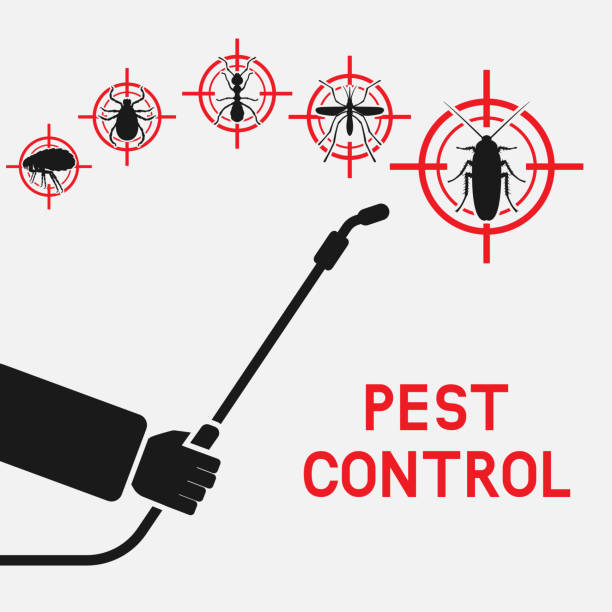Skilled Residential and Commercial Services by Pest Control Lockhart
Skilled Residential and Commercial Services by Pest Control Lockhart
Blog Article
Discovering Infestation and Therapy Approaches on the planet of Parasite Control
The landscape of pest control includes a myriad of difficulties, specifically as infestations of typical household insects proceed to advance. By integrating preventative procedures with advanced administration methods, such as Integrated Parasite Monitoring (IPM), homeowners can much better safeguard their settings.

Typical House Pests
When it pertains to managing our home, comprehending usual household parasites is vital. These insects not only interrupt our convenience yet can also posture wellness threats and damage building. One of the most prevalent family parasites consist of ants, roaches, rodents, termites, and bed bugs.
Ants, commonly seen foraging in kitchen areas, can infect food and establish big colonies. Rodents, consisting of mice and rats, can trigger structural damage and lug diseases like hantavirus and salmonella.
Acknowledging the indications of these pests, such as droppings, nests, or attack marks, is necessary for early intervention (Pest Control Lockhart). Correct cleanliness methods, sealing access factors, and preserving a clutter-free atmosphere are reliable preventative procedures. By identifying these usual household bugs and recognizing their behaviors, homeowners can take aggressive actions to mitigate problems, making certain a healthier living atmosphere
Recognizing Insect Infestations
Pest invasions can intensify quickly, turning a small annoyance right into a substantial problem if not attended to promptly. Recognizing the nature of these infestations is essential for effective management. Pests can get into domestic and business spaces for numerous reasons, including the look for food, sanctuary, or breeding grounds. Typical factors contributing to infestations include bad cleanliness, architectural susceptabilities, and seasonal modifications that drive pests indoors.
Recognizing the kind of pest is vital, as various types exhibit different actions and reproductive rates. For example, rats might develop nests in surprise areas while insects like cockroaches grow in wet environments. Early detection usually pivots on recognizing signs such as droppings, nibble marks, or uncommon audios, which can indicate an issue before it comes to be severe.
Environmental problems additionally play a crucial function in insect expansion. Warm, humid climates can facilitate the fast growth of bug populaces, while changes in landscape design or construction can unintentionally develop helpful settings. Normal inspections and preventative actions are extremely important to mitigating the risk of invasions. An educated method to comprehending these dynamics prepares for effective bug monitoring methods in the future.
Therapy Techniques and Strategies
Reliable therapy techniques and strategies are vital for minimizing parasite invasions and restoring a secure setting. A complex approach is typically best, including chemical, organic, and mechanical techniques tailored to the specific pest and the severity of the infestation.
Chemical therapies include making use of insecticides and herbicides, which can properly get rid of parasites. However, proper application and adherence to safety guidelines are crucial to minimize threats to humans and non-target microorganisms. Integrated Insect Management (IPM) motivates the cautious use of chemicals as a last option, counting rather on tracking and limit degrees to establish intervention requirements.
Organic control techniques include presenting all-natural killers or bloodsuckers to lower parasite populations. This strategy is progressively preferred, especially in agricultural settings, as it promotes environmental sustainability.
Mechanical approaches, such as catches and obstacles, offer instant relief from bugs without introducing chemicals. Alternatives consist of sticky catches for pests or physical obstacles for rats.
Eventually, the option of treatment method need to think about the specific bug, the setting, and potential effect on human health and wellness and communities. A well balanced combination of these methods can effectively take care of invasions while promoting long-term insect control remedies.
Safety Nets for Residence
Proactively attending to bug issues prior to they intensify is essential for preserving a healthy home setting (Pest Control Lockhart). Applying effective safety nets can significantly lower the chance of infestations, ultimately securing both your residential or commercial property and well-being

Proper landscaping also plays an important duty in avoidance. Continue Maintaining shrubs and trees cut away from your house lowers the possibilities of insects discovering their way indoors. Furthermore, guarantee that water drainage systems are functioning successfully to avoid standing water, which can reel in insects and various other bugs.
Last but not least, regular inspections are recommended. On a regular basis inspecting for indicators of insect activity permits very early treatment. By adopting these safety nets, property owners can produce a setting that is less hospitable to pests, consequently improving their general lifestyle and minimizing the requirement for substantial insect control treatments.
Business Bug Control Methods
A detailed strategy to industrial insect control is vital for businesses aiming to maintain a risk-free and sanitary atmosphere. Effective methods entail a combination of regular evaluations, employee training, and the application of Integrated Bug Monitoring (IPM) techniques.
Normal like this evaluations allow early detection of parasite activity, permitting timely intervention. Companies need to establish a routine schedule for these assessments, concentrating on risky locations such as cooking areas, storage areas, and garbage disposal sites. Worker training is just as crucial; personnel should be informed on the indications of insect invasions and the value of reporting them immediately.
Applying IPM methods helps alleviate bug problems sustainably. This consists of environment alteration, such as sealing entry factors and minimizing clutter, along with utilizing all-natural deterrents prior to resorting to chemical treatments.

Moreover, teaming up with a certified pest control service provider guarantees access to professional expertise and advanced therapy options. This collaboration can result in personalized pest control plans customized to the details demands of business, reducing risks and enhancing my company overall efficacy. Eventually, a positive and enlightened approach fosters a pest-free setting, safeguarding both public health and service track record.
Verdict
In verdict, effective pest control demands a comprehensive understanding of typical house parasites and their behaviors, combined with targeted therapy approaches. Carrying out precautionary measures along with treatment techniques such as Integrated Pest Monitoring and biological control improves the capability to mitigate problems.
Report this page